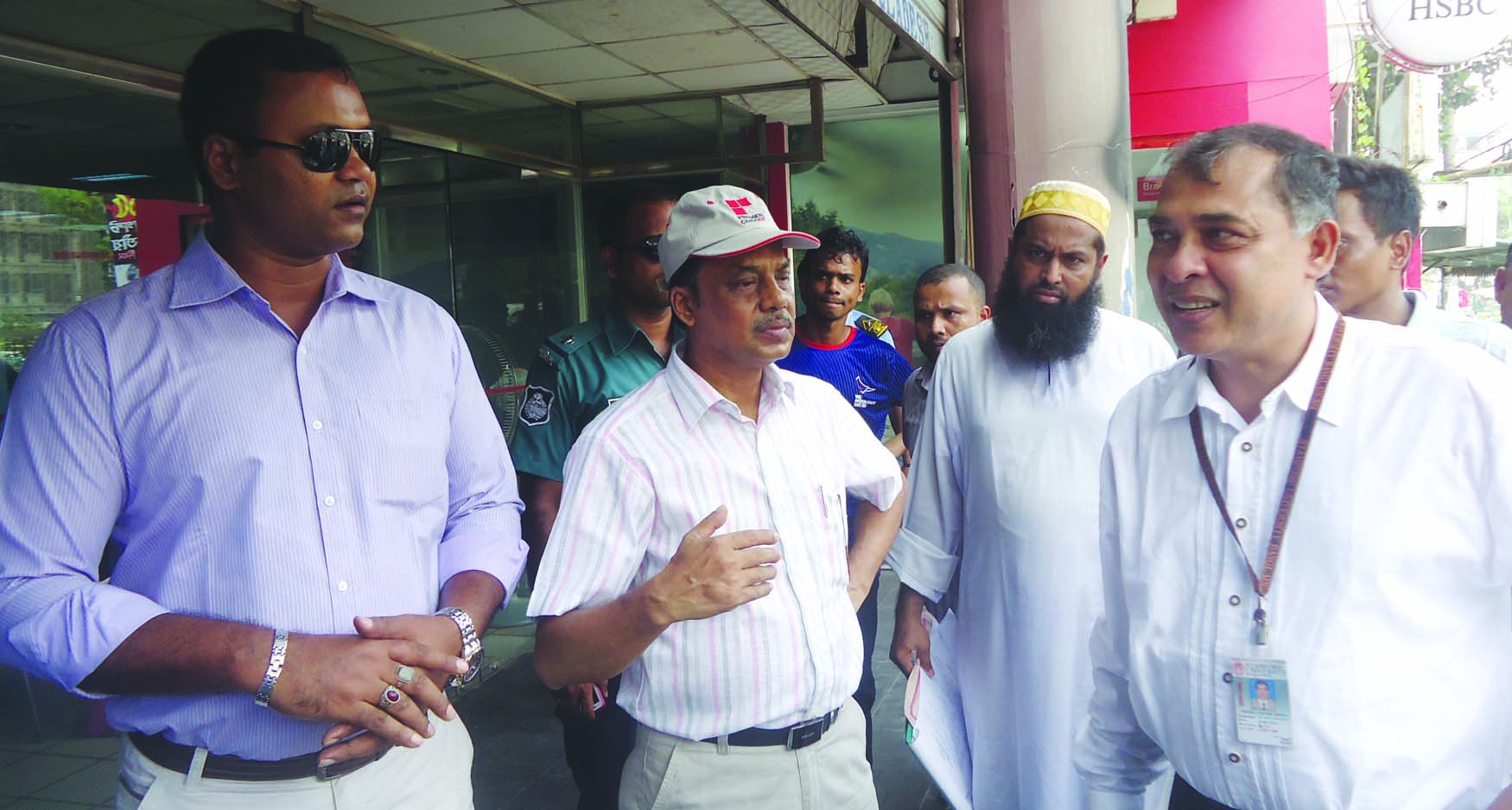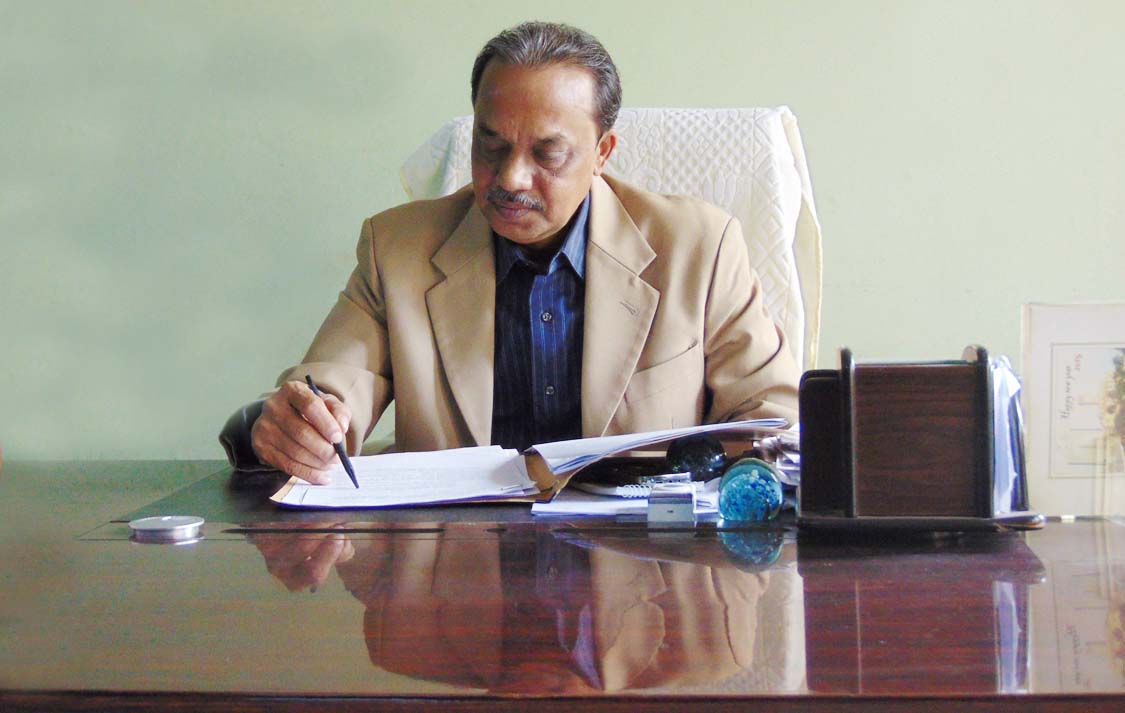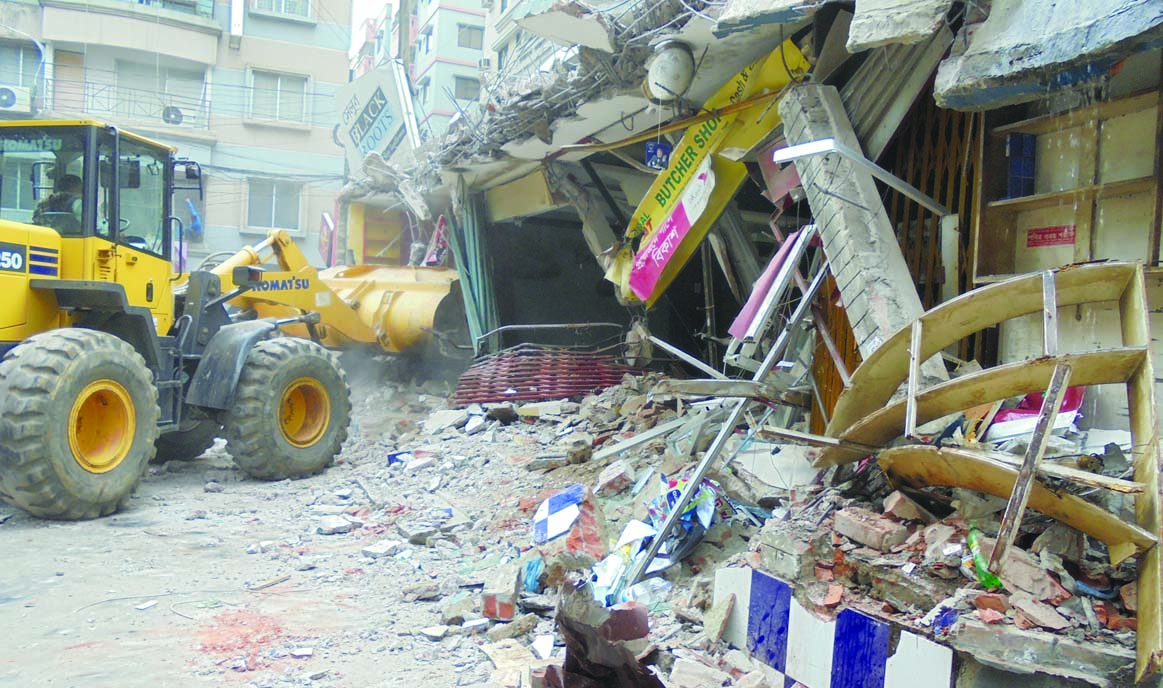Md. Shah Alam Chowdhury
Rajdhani Unnayan Kartripakkha (RAJUK) is the custodian of Dhaka`s planning, development and development control. Development Control is one out of three roles of RAJUK. It is under the Ministry of Housing and Public Works, Government of the People’s Republic of Bangladesh.
RAJUK was established with a view to turn Dhaka City into an excellent urban model city with its surrounding areas. It is said Dhaka`s urbanization started some 400 years ago by the side of the river Buriganga.
By the time, Dhaka reached the multitude of a multi-modal function. It made her a capital centric city of its nation. It has a glorious historical background that the people of the nation can feel proud of.
Development Control has been formed with its eight B.C Committee for the Approval of Building Plans. It is abide by Building Construction Rules 2006, Bangladesh National Building Code 1993, and Building Construction Act 1953.
Development Control plays a decisive role in removal of unauthorized construction which may include, among others,
1. Unauthorized Construction
2. Parking area otherwise/unauthorized used
3. Footpath encroachment
4. Building Deviation
5. Illegal occupancy and encroachment of RAJUK land.
‘Development Control’ – the Term itself can be misleading to many a persons. People may ask, by “Development Control’, do you mean to ‘control’ ‘development’? … This connotation has a pretext, precept and context. The term, ‘Development Control’ is to be understood from the standpoint of strategic planning and overall development goals of the metropolis.
According to Banglapedia, Rajuk plays a vital role for sustainable development, planning and controlling of Dhaka metropolitan city through planned urbanaisation and approves building design. Moreover, Rajuk deals with different development projects of Dhaka city include: satellite-city and New city Projects, sight and services Project, to build commercial and industrial zone, widening roads and reduce congestions, lay out plans for better traffic circulation, providing open spaces for recreation, demolishing or constructing buildings and construction of roads, bridges, culverts, park, religious placing, shopping mall, market, car parking space, academic institution, playground and lake etc. Rajuk also takes beautification project and rehabilitation project for suffering people.
Rajuk revised the Master Plan for Dhaka city drawn previously in 1959 and undertook many development projects. Financially and administratively, the most extensive of these projects are Banani-Baridhara development project (1990); housing for Rajuk personnel (1990); development of Kawranbazar, Mohakhali and Postogola; development of low-land between Dhaka-Narayanganj road and railway; Uttara model residential town; development of Sonargaon Hotel area; clearing slums and developing the land adjacent to Zohura Market; expansion of Motijheel commercial area; and construction of several link roads. In addition to these ongoing projects, RAJUK has many other projects under study and planning.
In 1995, Dhaka Metropolitan Development Plan (DMDP) formed with an area of 590 sq mile (1528 sq km) of the mega city. DMDP launched the grand-project (1995-2015) of which have three-tier consist of Structure plan, Urban Area Plan and Detailed Area Plan. Rajuk takes comprehensive detailed scheme for different zones of Dhaka Metropolitan city under the Structure plan consist of planned development stream, location of proposed streets and lay out infrastructure for the convenient of citizens. The duration of the project has been extended upto 2035. The development policy of existing vicinity’s area of Rajuk is also under the Urban Area plan. Prior to propounding the Urban Area plan, it worked as a flexible development endeavour. On 22 June 2010, the Detailed Area Plan has published in the Government official gazette. [The information was last modified on 8 March 2015].
To know more on it, we must trace back the history of RAJUK. Rajuk’s planning and development activities and conservation measures for the lakes and success stories from Dhaka. Dhaka Improvement Trust (DIT) was established in 1956 with an area coverage of (DIT Area) of 320 Sq. Mile. Rajdhani Unnayan Kartripakkha (RAJUK) was established in 1987. RAJUK Area is 590 Sq. Mile.
DIT to RAJUK, we can find from the records that DACCA IMPROVEMENT TRUST (DIT) was established in 1953 under “THE TOWN IMPROVEMENT ACT, 1953”. It was reorganized as RAJUK in 1987.
In 1947, when India was partitioned, Dhaka became the seat of the provincial Government of East Pakistan. The population increased from 0.28 million in 1951 to around 1.2 million in 1971. As the Capital of Bangladesh, which emerged as an independent country after the War of Liberation in 1971, Dhaka has now become one of the faster growing cities in the world and its population is likely to exceed 10 million by this time.

The Director (Zone-5) Md. Shah Alam Chowdhury, accompanied by concerned officers of RAJUK, is implementing the eviction program of RAJUK.
Although efforts had been made in the past to plan the growth of the City from a district town to one of the largest cities in the world, most have been unsuccessful. As a result, the living conditions have deteriorated very rapidly and the social as well as physical infrastructure are on the verge of collapse. Immediate actions are necessary to bring some discipline to the future growth of the city.
Development, Planning and Development Control – these three vital roles are being played by RAJUK in order to make the city liveable with all the amenities of today’s modern life. According to the Dhaka City Master Plan, as per the approved 1997 Master Plan of Dhaka City, the relocation plan was chalked out under the Spatial Planning Zones (SPZs) established by the Dhaka Integrated Transport Study (DITS) that divides the RAJUK Area into 19 sub-zones.
Rajuk Development Control Area: RAJUK exercises development control function as per provisions laid down in the East Bengal Building Construction Act, 1952 … Development Control Related Rules and Acts. Dhaka Mahanagar Building (Construction, Development, Protection and Removal) Rule 2008 .
Here, the discussion must allow some space for self criticism and perfection. Findings of a study [Article Ref. Sustainability 2016, 8(2), 119 doi: 10.3390/ su 8020119] reflect fresh light on some of the pertinent issues, ‘an emerging megacity such as Dhaka is a prime example of a complex and dynamic systems that might be represented by the interactions between socio-economic and environmental processes at both the local and global scale.
It says, being a former British colony, Bangladesh, as well as Dhaka, are still following the same planning hierarchy of colonial urban planning practices. Since independence, Dhaka city has grown both in horizontal and vertical directions, mostly without maintaining any development and planning guidelines. The first master plan for Dhaka was enacted in 1993. Recently, the government introduced the Dhaka Metropolitan Development Plan (1995-2015) based upon a target population of 15 million residents.
However, the projected metropolitan population of 15 million has already been surpassed. Due to huge pressure of urbanization, the city development patterns are dominated mostly by informal characteristics including substandard structure, narrow/irregular street, poor utility infrastructure networks and inadequate basic services. In this regard, comprehensive action is required to recognize the urban dynamics of Dhaka and to allocate or control its growth activity in a sustainable manner.
In other words, are we seeking ways to pursue and go for making a sort of decentralized policy approach to sustainable development? Dhaka city’s population has grown more than eight folds since 1971. A policy panacea for Dhaka would be to bring down its population to a manageable level that the City can optimally contain for sustenance.
\We all know formal urban development projects follow similar patterns, whether they are carried out by both the public and private sector. Most common initiatives include land development or residential township projects which are often followed by site and services development. After these developments, the land area is simply divided into roughly symmetric plots with the provision of a gridiron road layout and allotted for residential and commercial activities. Apart from site development, the private sector also develops individual apartment buildings sporadically in negotiation with the landowners.’ (Sikder, Sujit et al). Here comes the crucial role of RAJUK’s Development Control.
RAJUK is running on through its multi-sectoral investment plan and program following its master plan. To fulfill the demand of the market force and the contemporary needs, RAJUK brought a remarkable change on its organogram. Now, with its new organogram, RAJUK has been trying hard to achieve its goal to activate its zonal office function. A new wing has been formed namely ‘Development Control’ wings. This wing has a good number of educated and experienced manpower of different professionals, like Engineer, Architect, Planner, Economist, Management Administrator etc.
Today, one may be amazed to see the beautiful flyovers in Dhaka and the ambitious layout of the Dhaka Structural Plan 2035. Clearly, for the multi-faceted growth of a green and clean Dhaka megacity, there is a need for an integrated approach. There is a need for a concerted effort for the execution of a well orchestrated action. It must take into consideration the Dhaka Strategic Transport Plan and others as well.
A slogan has been raised Save Dhaka’ ‘Save Buriganga. Policy support at the macro level, decentralization and relocation moves with firm political commitment and thought leadership is needed to come out of the problems we are facing now. The policy prescriptions should be based on sound principles and policies commensurate with the overall national goals of environmental protection, sustainable economic growth and poverty eradication.
RAJUK is struggling from its very beginning to accommodate the people to give a good livable environment. Tremendous population pressure and unpredictable migration greatly influences unplanned urban growth in Dhaka. RAJUK has been doing lots of work in association with its development line agencies both in government and non-government agencies and trying to do as much as possible. But due to some built in critical factors and the externalities inherent in the system including rigidity in public mind, maximum steps taken for development control does not end up in completion.
Working on the field of development control at RAJUK for the last two years, I wish to put forward my studied observations and some thoughtful suggestions that may be adopted as short and long term strategies below:
1. RAJUK to be empowered by its status as well as finance in the government strata. The Zonal Offices to be activated according to the organogram approved by the Government.
2. Government’s Decentralization policies through the multi-sectoral investment plan and program to be done in the regional context, not to be only Dhaka centric.
3. Development projects taken by different sectoral agencies must be completed in time, otherwise it adds to people’s suffering.
4. Standard of educational institutions must be increased and the schooling must be started at the community level as development starts with education.
5. On the changing context and with time, people must learn to change their mindset, abide by the rules and regulations of RAJUK and other Departments. As they are getting benefit from their investment in Dhaka, they must go by the norms and comply the rules of authority.
6. Transport and communication system should be developed with the regional context. Railway and Road transport services must be efficient, e.g. safety measures to be taken, maintaining the time schedule and making the utility services amenity-rich and people-friendly.
7. Zonal office plays a vital role through the land use control according to DAP (Detailed Area Plan) of RAJUK. Investment potentiality has to look forward to adjust with the vision and mission of RAJUK and the nation. Different planning tools like land Re-Adjustment policy project may be implemented by RAJUK in association with the community people and other Government line agencies. Combined plot development may also help widen the existing narrow roads. As a result traffic jam will be reduced. Footpathways and Footoverbridges are to be built without design faults- user-friendly especially to children, women, sick and aged population, handicapped people.
8. In preparing Master Plans and detailed area plan, RAJUK has to consult and take into active considerations the professional norms and practices, and adhere to the concepts of modern planning. RAJUK needs interaction with and feedback from people at large.
9. By this time, RAJUK has tried to go ‘Digital’ and opened up pro-people online e-services for the people to get their Planning and Building permission. As a result, it would greatly help enhance RAJUK official’s integrity, efficiency and transparency. This is a step for thinking ahead that is seen as a milestone for RAJUK.
10. Dhaka lies very much on the Earthquake crater and is vulnerable to atrocities and natural hazards. RAJUK officials are to be extra alert to address the core development needs of the people and provide support and backstopping during earthquake hazards.
11. To provide better services, play its mandated role of managing its corporate business well, RAJUK may take its resilience position to be taken in its strategic plan.
12. Last but not the least, planning, development and development control standing as a whole has to go hand in hand, be enforced and be guided in the right direction creating a better environment for the future generation.











